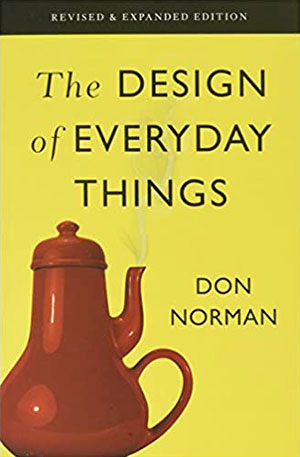Book Specifications
Title: The Design of Everyday Things: Revised and Expanded Edition
Author: Donald A. Norman
Formats: Paperback, Kindle, Audiobook
Publisher: Basic Books, revised edition
Published: November 5, 2013
Pages: 370
ISBN-10: 9780465050659
ISBN-13: 978-0465050659
Emphasizing the User and the Process—Not the Industry
Some time ago, I read an article on a business news Web site that described User Experience as a new way of designing Web sites.” Of course, this is a fundamental misunderstanding of what User Experience is. I’ve long advocated for User Experience refocusing on a philosophy that starts with people and their needs and behaviors—not on the products to which we apply UX methods. Wrongly assuming that User Experience is synonymous with Web design is similar to saying that an assembly line is a new way of building cars. While the assembly line had its first application in the automotive industry a hundred years ago, it has clearly found broad application in industries as diverse as firearms, appliances, toys, and more.
The question is: what knowledge and expertise are critical to understanding how to solve UX design problems? I frequently see job postings for UX researchers or designers who have three to five years of experience in designing mobile apps. These were particularly amusing in 2008—because almost nobody had designed a mobile app at that point. But, in 2021, I find them sad because they reinforce the notion that UX professionals should be industry or product focused when, in fact, they should be user focused. A bona fide UX professional can do UX research and design across any product or industry, regardless of their experience, because their job is understanding people and their needs.
Similarly, when Norman went to Three Mile Island to bring clarity to the root cause of the accident, he was not a nuclear engineer. Granted, his background was as an electrical engineer, but the fact that he was not immersed in the intricacies of building a nuclear power plant likely made it easier for him to disregard the assumptions that led to the plant’s design and let him focus on the interactions between the plant operators and with the control room.
The brilliance of Norman’s book is that it relates his principles of interaction to products and experiences with which people are already familiar. As Norman notes:
“All artificial things are designed. Whether it is the layout of furniture in a room, the paths through a garden or forest, or the intricacies of an electronic device, some person or group of people had to decide upon the layout, operation, and mechanisms.”
In The Design of Everyday Things, Norman spends considerable time describing the conflict between engineering for products and interactions with people. Engineers design machines or systems that can achieve some type of interaction in a predictable, repeatable manner. They—and the rules that govern them—are largely inflexible. These engineers tend to discount the need to make the effort to understand the people who use these systems because they take their humanity for granted. In Norman’s words:
I used to be an engineer, focused upon technical requirements, quite ignorant of people…. It took a long time for me to realize that my understanding of human behavior was relevant to my interest in the design of technology. As I watched people struggle with technology, it became clear that the difficulties were caused by the technology, not the people…. ‘You are designing for people they way you would like them to be, not for the way they really are.’”
 After reviewing some more recently published books, I decided to review a title among the foundational writings for User Experience: Don Norman’s The Design of Everyday Things. This book was originally published in 1988 and has been expanded and updated to apply the principles of human-centered design to Web sites, software, and mobile apps.
After reviewing some more recently published books, I decided to review a title among the foundational writings for User Experience: Don Norman’s The Design of Everyday Things. This book was originally published in 1988 and has been expanded and updated to apply the principles of human-centered design to Web sites, software, and mobile apps.
